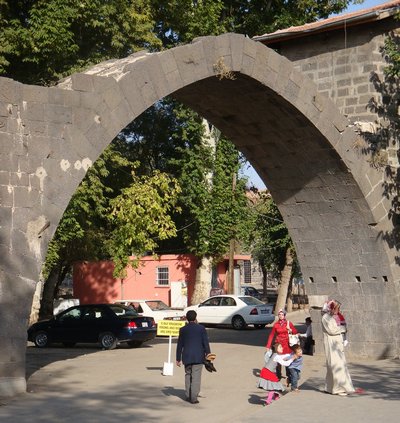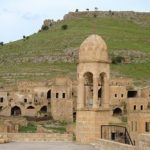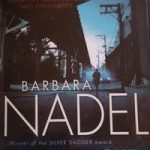It’s not easy to be a travel writer when at heart you’re rather an earnest person. Travel is, after all, an essentially frivolous business. You don’t have to do it. You can only do it if you have expendable income. It’s all about the search for adventure, beauty, the authentic and the picturesque. Only fleetingly is it about the search for the truth. Like high fashion, it’s frippery fun, not to be taken too seriously.
Yes, yes, I know the arguments about travel broadening the mind and they are, of course, the arguments that first propelled me onto the road myself. And, yes, I’d like to think that travel DID broaden my mind in a general sense, making me more aware of the beauty of the globe, of the wide variety of thoughts and attitudes held by its people, shaking me out of my monocultural mindset, teaching me that there was nothing to fear in difference per se.
The trouble is that travel can only take you so far. In the days when I worked as a guidebook writer for Lonely Planet one of my gigs was Iran, a country I had never visited before. Fortune smiled on me when it came to a visa and I was able to stay for a whole two months. By most travellers’ standards that was a long time, plenty of time to get around most of the country’s main tourist attractions certainly. But I didn’t speak a word of Farsi and from time to time I would wring my hands in despair at not being able to tell whether the graffiti spray-painted on the wall said “Khomeini Forever”, “Down with America” or just plain “I Love Fatima.” So when LP wanted to inscribe the front cover of the new edition with the words “Iran: The Inside Guide…” or some such I put my foot down. How could it possibly be an inside look, I asked, when I hadn’t been able to hold even the simplest of conversations with a local in their own language?
By then, you see, I’d been living in Turkey for eighteen months and had grown used to the luxury that is knowledge of the local language. True, my Turkish was still pretty rudimentary, but it was coming along nicely and increasingly I could read the adverts and know ahead of time what was going to happen.
Still in Turkey more than a decade later, I remain a travel writer and the limitations of that genre still bother me from time to time. Sure, I know more than most visitors about what is going on here. Sure, I can run through the sights for them and pontificate about the politics, but the fact remains that my work is mainly about matching travellers and their budgets to the right hotels, not about digging up murky secrets and bringing them to light.
This fact gnawed away at me again this week as news emerged from Diyarbakır that excavations in the İç Kale (Inner Castle) had uncovered human remains. Almost at once it was obvious that they were likely to be the remains of victims of JİTEM (Jandarma İstihbarat ve Terörle Mücadele, Gendarmerie Intelligence and Fight Against Terrorism), a shadowy organisation set up inside the Gendarmerie in the 1980s that is now blamed for many of the disappearances in the southeast. And what has that got to do with tourism, you might well ask? Well, the sad fact is that I had visited the İç Kale a couple of years ago and taken great pleasure in exploring an area once off-limits to visitors and now clearly a tourist attraction of considerable potential. Not once did I wonder about the recent history of the abandoned prison. Not once did it cross my mind to think that the site might turn out to be a charnel-house despite the fact that by then I had a long history with Diyarbakır.
To recap a bit. I first visited the city in 1992 on a group tour of southeastern Turkey with the Explore travel company. I had been commissioned to write a book, now long out of print, rather pompously called The Good Tourist in Turkey which was bandwaggon-hopping on the then much talked about search for a more sustainable model for tourism. As a lefty and a greeny, it was a project right up my street, one that fitted well with my “less fun, more seriousness” approach to travel. The Diyarbakır visit was certainly an eye-opener, the first time in my life, for example, when someone had shown me a baby that was almost bound to die for lack of the appropriate medical care. Sure, I came away with a more rounded view of what was happening in the city than the more cautious members of the group but still it was all very superficial and was, in any case, speedily forgotten in face of the complications arising from one reluctant dinner date with a local guide who then proceeded to pursue me across the country.
In 1994, when I landed work with Lonely Planet, I returned to Diyarbakır on my own. Those were dark days for the city with tourists an uncommon sight on the streets, and from time to time as I lay tucked up in my hotel bed I would fret about the fact that I was involved in something so superficial when, right here, right now in the back streets, terrible things would be happening to locals who had stepped out of line. What I didn’t know, of course, was that some of those terrible things were happening very close to Kıbrıs Caddesi, the heart, in as far as there was one, of Diyarbakır tourism.
My job was to visit hotels, check locations on the map (it was almost impossible then to lay your hands on a printed map of the city) and make sure we were listing the correct opening times for the attractions, not to stick my nose into military matters. Even so, it wasn’t always easy work. Exploring the warren-like streets around the Ulu Cami, I found it almost impossible to stop and inspect anything because of the crowds of children who would quickly gather. They meant me no harm but were speaking in Kurdish which meant that I couldn’t understand anything they said. Their poverty was also glaringly apparent which made me an obvious target for robbery. Finally I paid a guide to walk with me and keep them at bay so that I could get on with my work. The most anxiety-provoking moment came when we were walking towards the museum together and passed a police post. My guide had just told me that his brother had been sent to jail in Bartin where he had gone on a hunger strike. Surely when they saw him walking with me the police would take note and haul him in later to ask what he’d been telling me.
One evening I fell into conversation with two young men in a tea garden that stood beside the old local bus terminal. I don’t remember how we got chatting but once they learnt that I worked for Lonely Planet they grew agitated, seized the book from me and turned to the page that presented a beginner’s guide to the Kurdish issue. “Look at that! Does he look like us?” they all but shouted, and sure enough, when I looked at the drawing that illustrated the box, I saw an image of a crazy-bearded man in a turban who looked more like the Wild Man of Borneo than these two bejeaned youngsters.
That night I agreed to accompany them to another tea garden some distance away by car. It was not an easy decision. All my instincts for self-protection urged me to say no. But what was the point, I thought, of travel if you never engaged with the locals for fear of what might happen? How could you delve beneath the surface if you turned down every invitation? In that tea garden they ran through their own fairly moderate desires not for a fully-fledged Kurdistan but for the right to education in Kurdish, to locally produced television in Kurdish and to Kurdish newspapers. Dropping me back in Kıbrıs Caddesi they muttered a quick thank you. “What for?” I asked in surprise since they’d picked up the çay tab despite my being the “wealthy” foreigner.
“For trusting us,” they replied. “Not everyone would have done that.”
Since then I’ve returned to Diyarbakır countless times, noting with delight that there was no longer a tank parked at the crossroads in the centre of the old city. I’ve watched as the walls were renovated and the magnificent Hasan Paşa Han turned into a big-breakfast hotspot. I’ve watched new hotels going up, museums closing for renovation, derelict churches being given new life. On the whole I’ve believed that I was watching a city moving in the right direction whose biggest problem now was mass unemployment, a scary thought since if work can’t be found for the population as it is now, how is it going to be found for an even larger one in an area where huge families remain the norm? In such a situation I comforted myself that it was in tourism that Diyarbakır’s best hopes for the future lay. After all, Mardin had completely turned itself around in recent years and, if anything, Diyarbakır had more to offer visitors than Mardin if only real, lasting peace could be established there.
In my rosy picture of the future the İç Kale played a major role. Graceful humpbacked Artukid bridge? Tick. Historic church? Tick. Goats wandering in and out of old historic buildings? Tick. Now, though, the dark past has come crashing down on that fantasy because the one thing tourists certainly don’t want to see is freshly dug up graves. I presume that the İç Kale is closed again for the time being. But how I wish sometimes that my brief ran wider than the latest hotel openings.

Written: 29 January 2012


